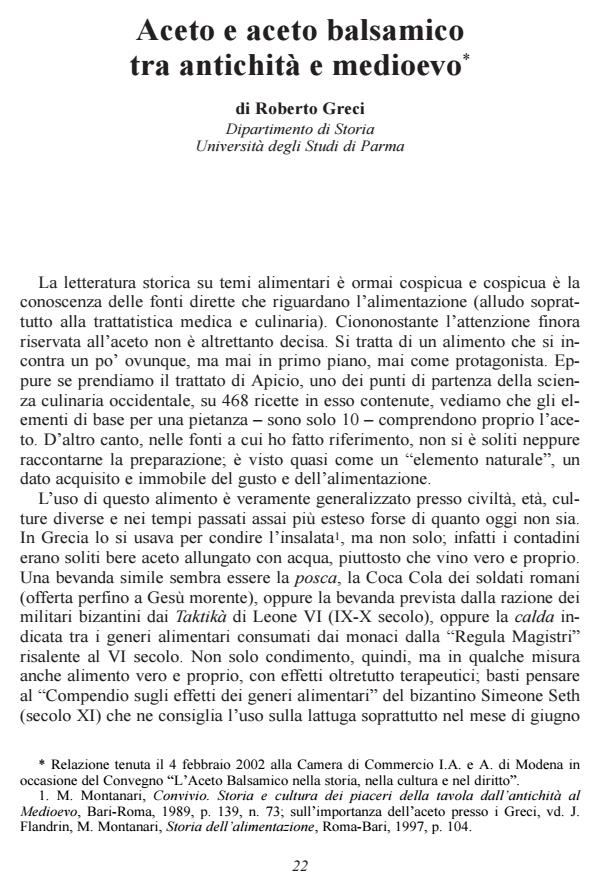Aceto e aceto balsamico tra antichità e medioevo
Journal title ECONOMIA AGRO-ALIMENTARE
Author/s Roberto Greci
Publishing Year 2002 Issue 2002/1
Language Italian Pages 10 P. File size 29 KB
DOI
DOI is like a bar code for intellectual property: to have more infomation
click here
Below, you can see the article first page
If you want to buy this article in PDF format, you can do it, following the instructions to buy download credits

FrancoAngeli is member of Publishers International Linking Association, Inc (PILA), a not-for-profit association which run the CrossRef service enabling links to and from online scholarly content.
Roman and medieval ages both knew a wide (but quite different) use of the vinegard. In fact in the Roman age this food often was stirred and mitigated with aromatizing substances and honey, while the texts of medieval culinary art document a decided fondness (imposed by French) for clearly acid tastes, obtained with the resort to vinegard and still more to the verjuice. The full recovery and the development of the bitter-sweet taste will happen between XIV and XV century and will follow a route that from Mediterranean countries will set out for France and for Europe. In this turning point of the taste (documented in a border area such as the Piedmontese one) the vinegard was to play an important role. As for balsamic vinegard, we can say (on the base of insufficient sources) that such product was already to be known in Roman age and medieval age, that the privileged place of production was the territory of Modena and Reggio Emilia, that its insufficient diffusion was to depend on the prevalence for strong tastes (and therefore on the scarcity of the demand) and on the difficulties of transports.
Roberto Greci, Aceto e aceto balsamico tra antichità e medioevo in "ECONOMIA AGRO-ALIMENTARE" 1/2002, pp , DOI: